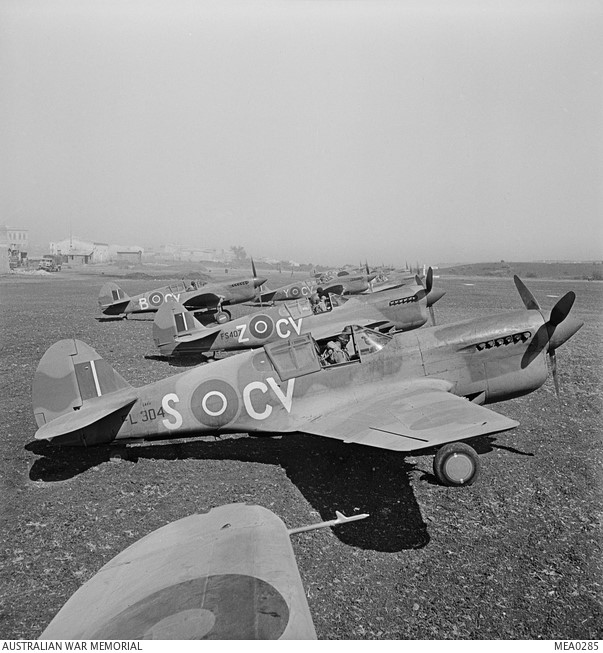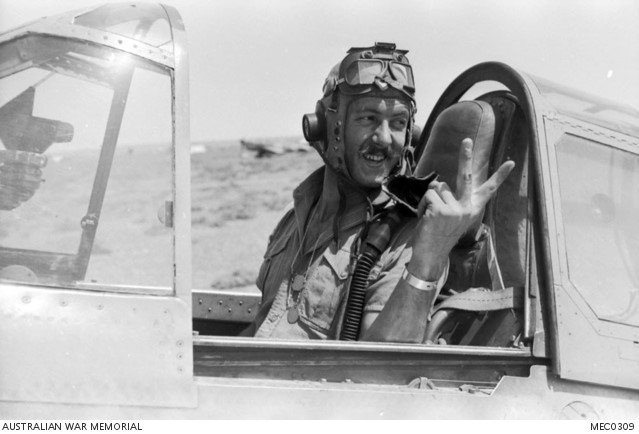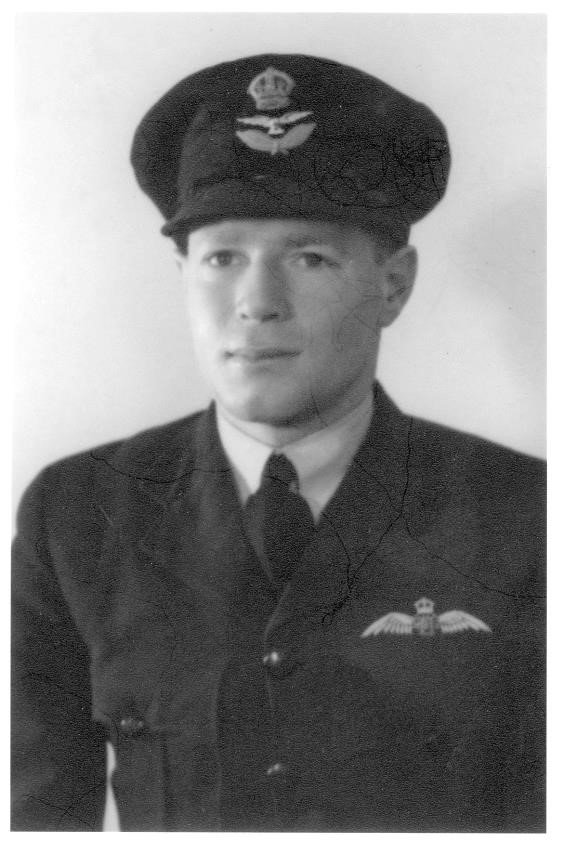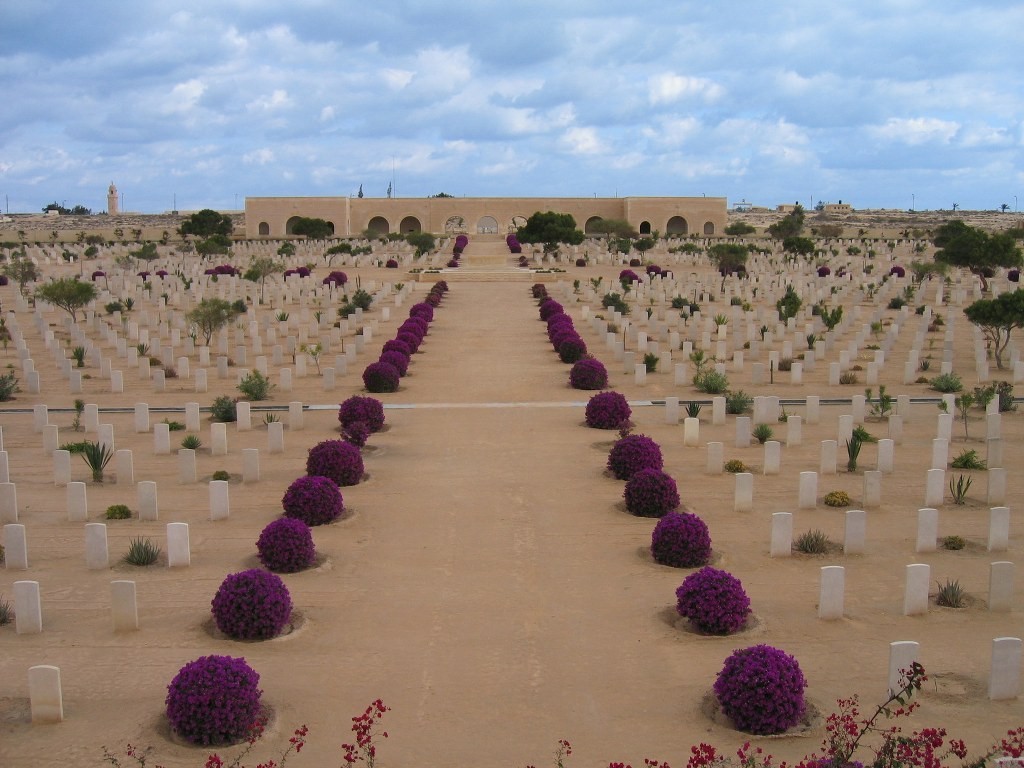Flying Officer Harrold Graham Pace, the son of Arthur Harrold Pace and Jeanie Christie Pace (nee Butler) was born at Brisbane in Queensland on 31st October 1916. Harrold Pace was educated at the Toowoomba Grammar School. At the age of 23 years he was one of the first men to enlist in the Permanent Forces of the Royal Australian Air Force. He is shown as joining the R.A.A.F. at No. 2 Elementary Flying Training School at Archerfield in Queensland on 4th March 1940. At the time of his enlistment he was unmarried and employed as an Articled Law Clerk. He had previously served in the Militia with the 9th/49th Infantry Battalion during the years 1935 until 1937. He was allotted the service number of 270824. His physical description at the time of his enlistment was that he was 5 feet 7 inches in height and weighed 132 pounds. He had a medium complexion, blue eyes and medium (sic) hair. He stated that he was of the Church of England religion. He gave his next of kin as his father, Mr Arthur Harrold Pace, Solicitor, Empire Chambers, Queen Street, Brisbane. After his marriage, his next of kin was changed to Mrs Ida Frances Pace, “Strathgarve”, Dalveen, via Warwick.
Flying Officer Harrold Pace joined No. 1 Service Flying Training School at Point Cook in Victoria as a student on Course No. 30 on 1st July 1940. Upon completing his pilot training at Point Cook he was awarded the Flying Qualification Badge on 26th August 1940. He joined No. 25 (City of Perth) Squadron at R.A.A.F. Base Pearce in Western Australia on 28th October 1940. No. 25 Squadron operated with Australian built Wirraway aircraft and carried out anti-submarine and convoy protection duties off the Western Australia coast around Fremantle and Rottnest Island. He joined No. 2 Bombing & Gunnery School at Port Pirie in South Australia on 10th October 1941. He was promoted to the rank of Flying Officer on 11th October 1941. He joined No. 2 Embarkation Depot at Bradfield Park in Sydney on 27th October 1941 to prepare for movement overseas on attachment to the Royal Air Force in the Middle East. He embarked by air transport from Australia on 1st November 1941, and joined the Royal Air Force Transit Camp at Aboukir in Egypt on 8th November 1941. He joined No. 3 Squadron Royal Australian Air Force on 2nd November 1942. No. 3 Squadron operated P40 Tomahawk and Kittyhawk fighter aircraft and often engaged in intense air battles with the German Luftwaffe.
Flying Officer Harrold Pace was killed in a flying Battle in the Middle East on 13th May 1942 whilst serving with No. 3 Squadron. At the time of his death Harrold Pace was 25 years of age. He was buried in the field. However after the war the graves registration unit was unable to locate and recover his remains. His name is therefore recorded on the Alamein Memorial at the El Alamein War Cemetery in Egypt. His name is commemorated on Panel No. 98 at the Australian War Memorial in Canberra and locally on the Toowoomba Grammar School WW2 Honour Board.
Note
The following item was published in the Courier Mail on Tuesday 21st April 1943:
AUSTRALIANS BETTER THAN ENEMY AIRMEN – “Man for man and aircraft for aircraft, in a dogfight, the enemy are not in the race, as Micky Barr proved when he was caught on his own low-down by three enemy machines, and shot down two,” Writes Flying Officer Graham Pace to his father, Mr A.H. Pace, solicitor, Brisbane. Flying Officer Pace is a member of the famous Australian fighter-squadron in the Middle East, reported early this month to be resting after seven months of almost ceaseless fighting in the desert. “I like the aircraft very much indeed,” he writes, “but it is not often we can meet up with the opposition in numbers and really mix it. On two occasions recently we struck a large number and the squadron accounted for 16 for the loss of one. It is a constant battle of tactics and watchfulness, and one learns a lot in a brief time.”

Australian War Memorial photograph MEA0285
No 3 Squadron Kittyhawks preparing to take off for operations in the Middle East.
For some reason a Casualty/Repatriation file does not exist for Harrold Pace. These files give detailed information about the circumstances of death and correspondence sent to their next of kin.
The No 3 Squadron RAAF Association Roll of Honour contains the following information about his death:
On 13th May 1942 twelve aircraft of No. 3 Squadron were bounced by two Messerschmit 109F fighters over Gazala, Oberleutnant Hans-Joachim Marseille of I/JG27 shot down Harrold Pace in Curtiss Kittyhawk AL172, who was killed by a single shot to the head. He was recorded as buried at Derna map reference PP.381431, but it proved impossible for recovery teams to locate his grave after hostilities had finished. Marseille also shot down Colin MacDiarmid in AK855, who bailed out wounded.
The following item was published in the Courier Mail newspaper on 29th May 1942:
ROLL OF HONOUR – Flying Officer H. Graham Pace, only son of Mr and Mrs Arthur H. Pace, Wilston, is reported to have lost his life when his plane crashed at Derna, in the Middle East, on May 13, as the result of enemy action. Flying Officer Pace, whose wife resides at Dalveen, obtained his degree of Bachelor of Laws at the Queensland University just before he enlisted, and obtained leave from Archerfield to attend the Supreme Court, Brisbane, where he was admitted as a barrister. He was a member of the famous Australian squadron led by Flying Officer Andrew (“Mickey”) Barr.
The following item was published in the Courier Mail on Tuesday 21st April 1943:
AUSTRALIANS BETTER THAN ENEMY AIRMEN – “Man for man and aircraft for aircraft, in a dogfight, the enemy are not in the race, as Micky Barr proved when he was caught on his own low-down by three enemy machines, and shot down two, “Writes Flying Officer Graham Pace to his father, Mr A.H. Pace, solicitor, Brisbane. Flying Officer Pace is a member of the famous Australian fighter-squadron in the Middle East, reported early this month to be resting after seven months of almost ceaseless fighting in the desert. “I like the aircraft very much indeed,” he writes, “but it is not often we can meet up with the opposition in numbers and really mix it. On two occasions recently we struck a large number and the squadron accounted for 16 for the loss of one. It is a constant battle of tactics and watchfulness, and one learns a lot in a brief time.”

Australian War Memorial photograph MEC0309
A No. 3 Squadron pilot in the cockpit of a Kittyhawk aircraft wearing his headgear
(Likely indicating that he had achieved two kills).
Flying Officer Harrold Pace was shot down by a German fighter ace, Hans-Joachim Marseille, who became known as the “Star of Africa” who was credited with some 150 victories in aerial combat over the British Commonwealth’s Desert Air Force during the North African campaign. He flew the Messerschmitt BF 109 fighter during the whole of his combat career. It was during the course of three days that he destroyed 17 of these aircraft. He was to meet his own death on 30th September 1942 at Derna, the location where Harrold Pace met his death.
Toowoomba Grammar School archive records show that he enrolled as a student on 3rd February 1930 and left the school on 31st December 1933.




